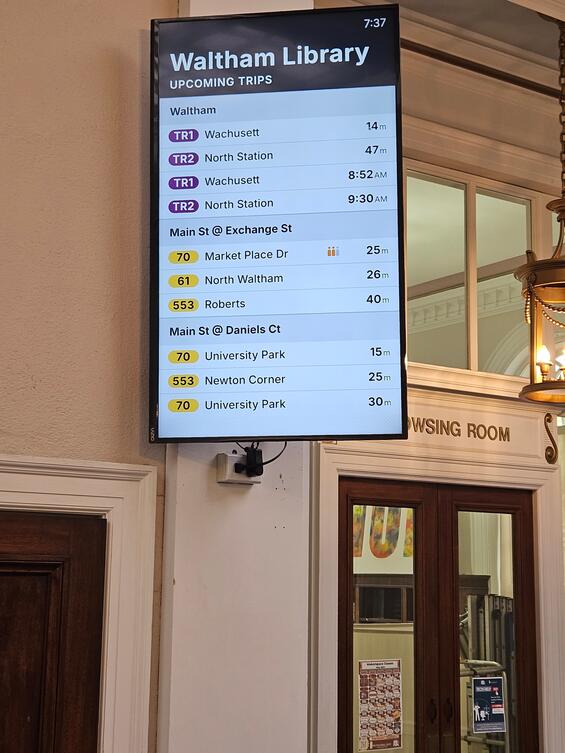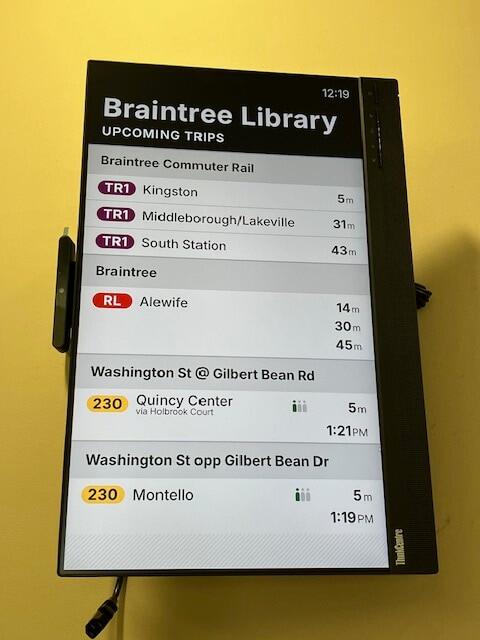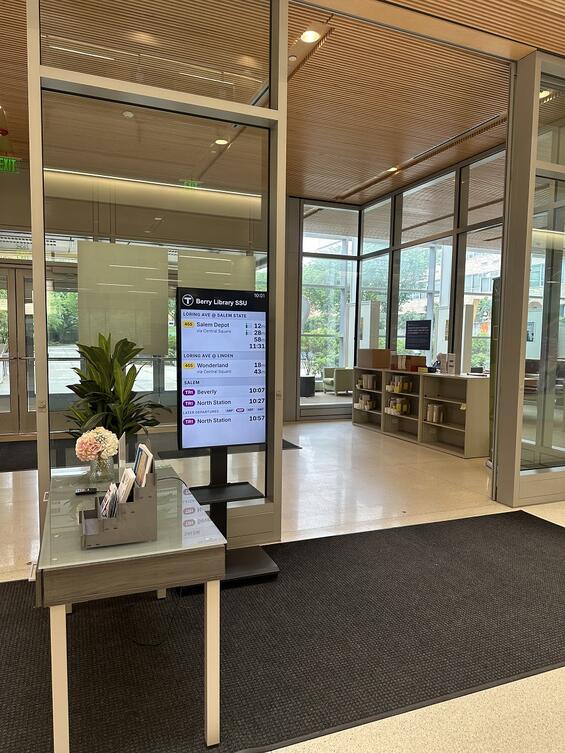What we're doing / the experiment
Building on our partnership with the Massachusetts Library System (MLS) and the MBTA from the Browse, Borrow, Board prototype, we are exploring the value of real-time transit screens in libraries. Working with the MBTA Technology Innovation Department (TID), we have created a simple process so a library can request a URL that will display real-time transit arrival information for the MBTA services that serve their location.

The real-time transit screen at the Waltham Public Library shows upcoming Commuter Rail and bus arrivals, as well as crowding information for certain bus routes.

The Thayer (Braintree) Public Library real-time transit screen shows upcoming Commuter Rail arrival times and track information; upcoming Red Line arrivals; and upcoming bus arrivals with crowding information.

The Berry Library (Salem State University) real-time transit screen shows patrons bus service and Commuter Rail service, conveniently located near the exit doors.

The real-time transit screen at Chelsea Public Library sits on a table next to free Charlie Cards and bus schedules.
The Lab coordinated outreach through MLS to the 107 libraries in the MBTA’s service area. Going forward, interested libraries can contact The Lab to have a brief conversation about the technical requirements for the real-time screens. The Lab coordinates with TID to have the unique URL configured for the Library. Within 1-2 business days, the unique URL is ready for the Library, and The Lab sends the link along with a reminder about how to best implement the real-time transit screen.
Why we're doing it
Real-time information makes transit more accessible, and the MBTA has a long-term goal of making such information more widely available to its riders. In service of that objective, TID has developed software that powers real-time information not only on MBTA signage, but on screens that any 3rd party—a store, a restaurant, a residential building—might install themselves. By virtue of their role, location, and existing digital screens, we thought that public libraries might be a perfect partnership opportunity for this initiative.
What we hope to learn
Through conversations with library staff, we hope to understand whether library patrons notice the signage, and if people feel they understand the information being displayed. Are they more likely to take transit to and from the library as a result of it?
We are also curious if there are other public spaces where people would be interested in real-time transit screens. We are interested in a potential future iteration that incorporates additional services such as BlueBikes and RTA services.
For the MBTA, this partnership is a way of learning about whether and how this idea—of powering real-time information on non-MBTA screens—might be viable at a larger scale, and what software features might make it more useful or sustainable.